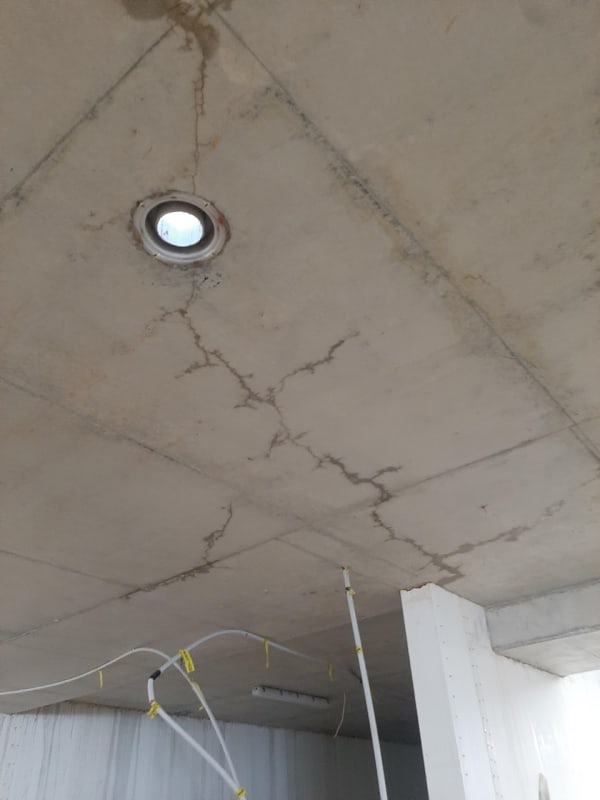Matt_Struc
Structural
Hi all,
I have designed a suspended slab over a basement (so one level). After formwork was removed the slab showed hairline cracks in numerous places particularly around small plumbing openings. The cracks do not follow a pattern that I know, they show near supports, in mid-spans, on the face of beams, radiating out of walls.
Now the slab is a mix of many systems (flat plate, two way slabs on beams, one way slab on walls and combination). All slab types exhibited same cracks. I have ruled out the possibility of these cracks being structural due to flexure or shrinkage and what seem to me as dodgy workmanship.
It has been 6 months now and the slab is fully loaded with two storeys of brick and timber and the cracks seem as they are. Only obvious down effect is that the cracks drip water during heavy rain which to me it is a longterm problem that needs to be addressed now. The slab was poured during heavy rain and it rained continuously for a week after
What do you guys think these cracks are, interested to hear your opinions.


I have designed a suspended slab over a basement (so one level). After formwork was removed the slab showed hairline cracks in numerous places particularly around small plumbing openings. The cracks do not follow a pattern that I know, they show near supports, in mid-spans, on the face of beams, radiating out of walls.
Now the slab is a mix of many systems (flat plate, two way slabs on beams, one way slab on walls and combination). All slab types exhibited same cracks. I have ruled out the possibility of these cracks being structural due to flexure or shrinkage and what seem to me as dodgy workmanship.
It has been 6 months now and the slab is fully loaded with two storeys of brick and timber and the cracks seem as they are. Only obvious down effect is that the cracks drip water during heavy rain which to me it is a longterm problem that needs to be addressed now. The slab was poured during heavy rain and it rained continuously for a week after
What do you guys think these cracks are, interested to hear your opinions.


